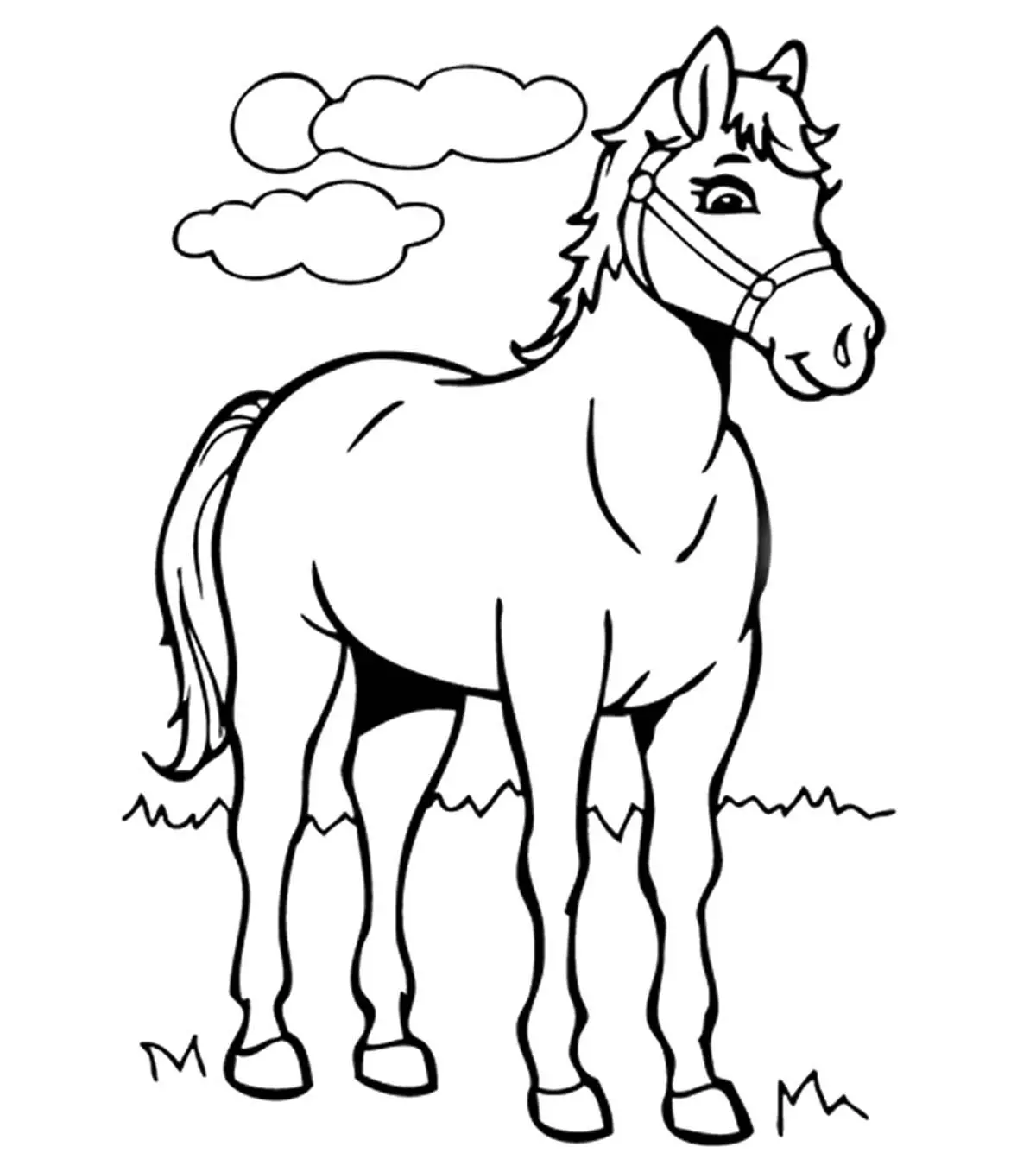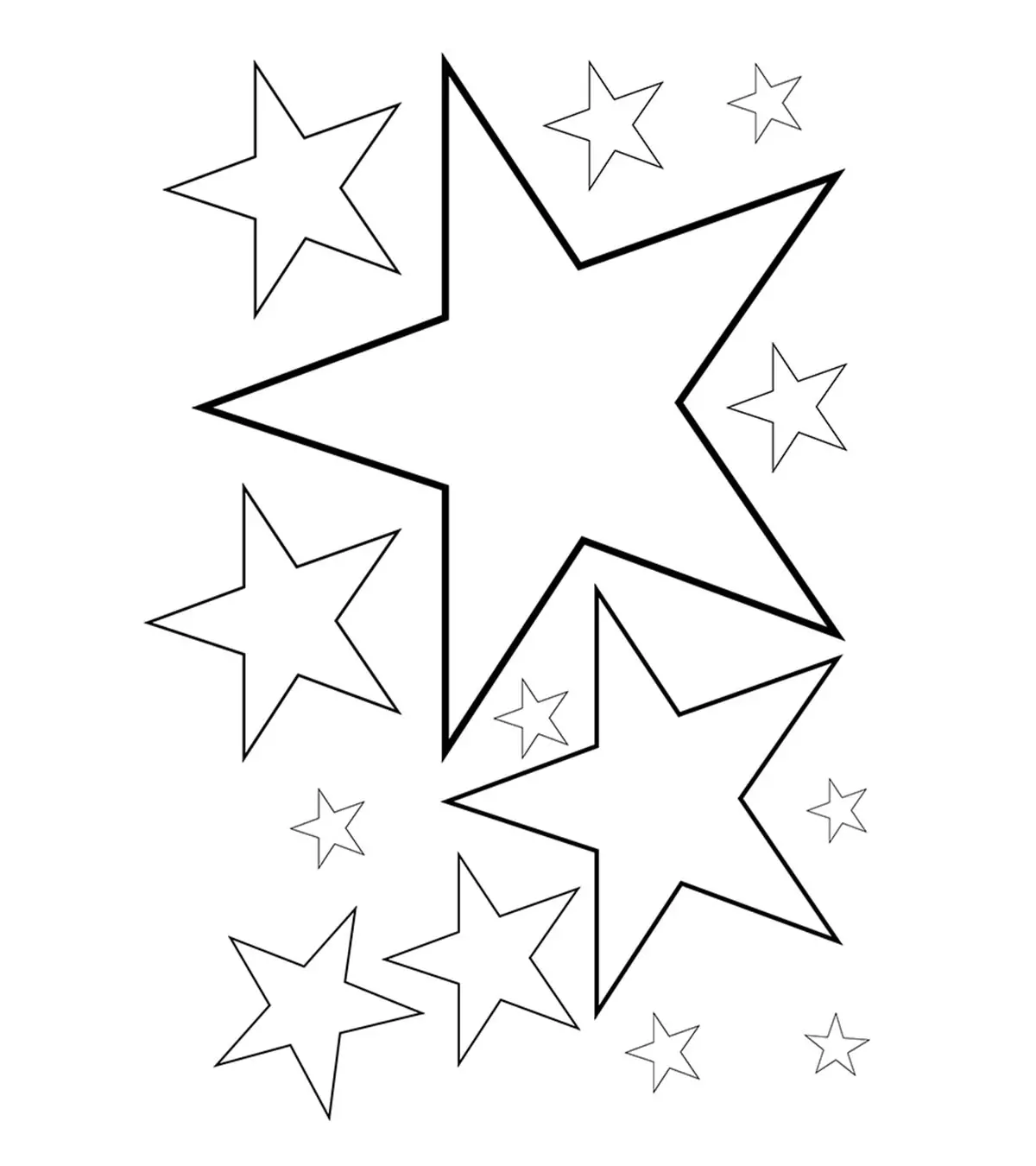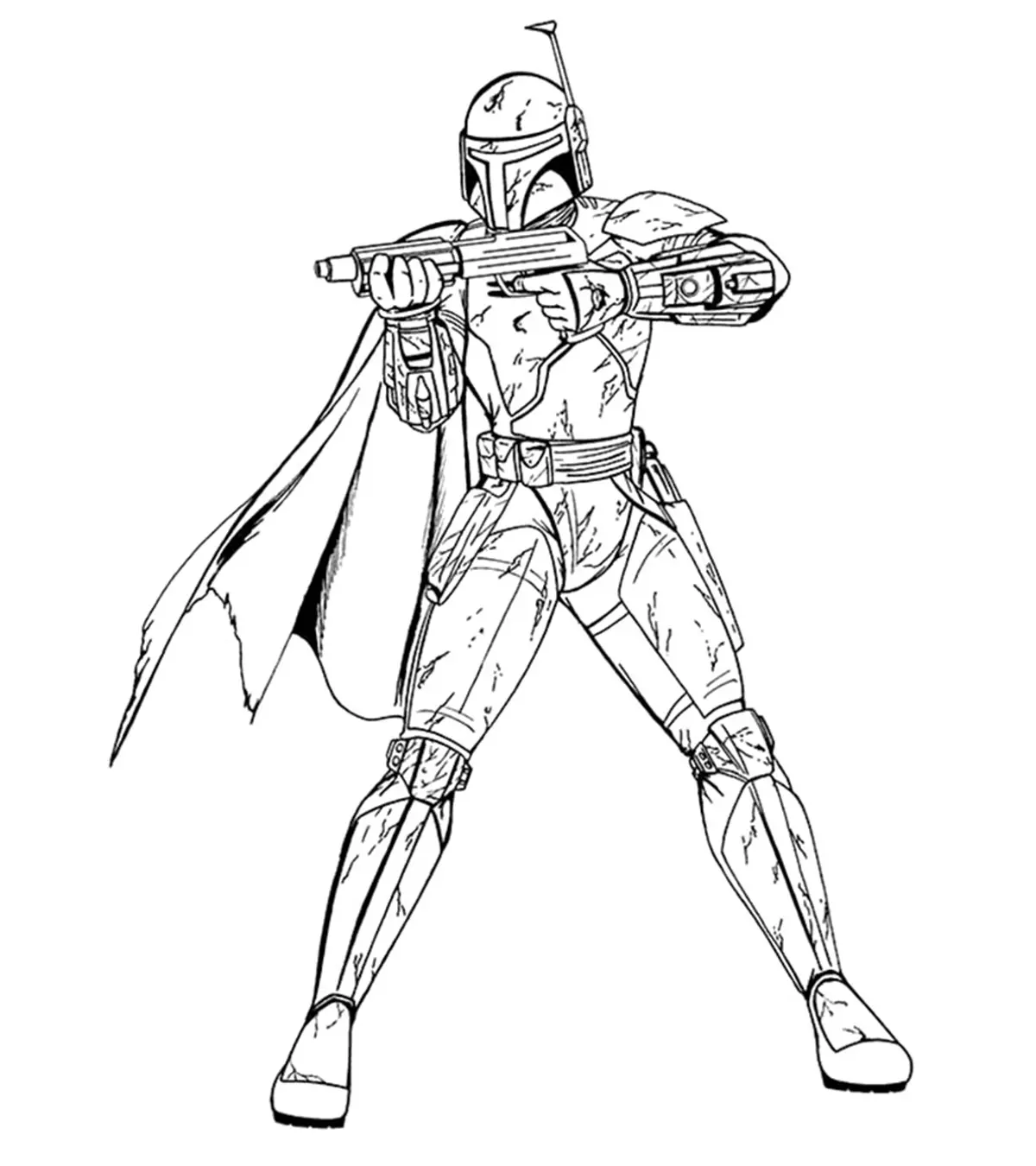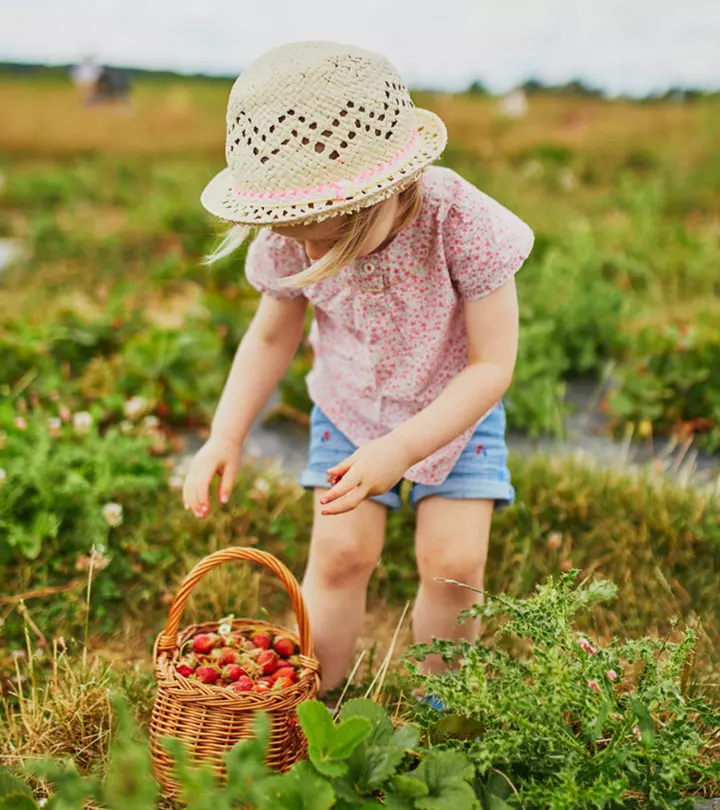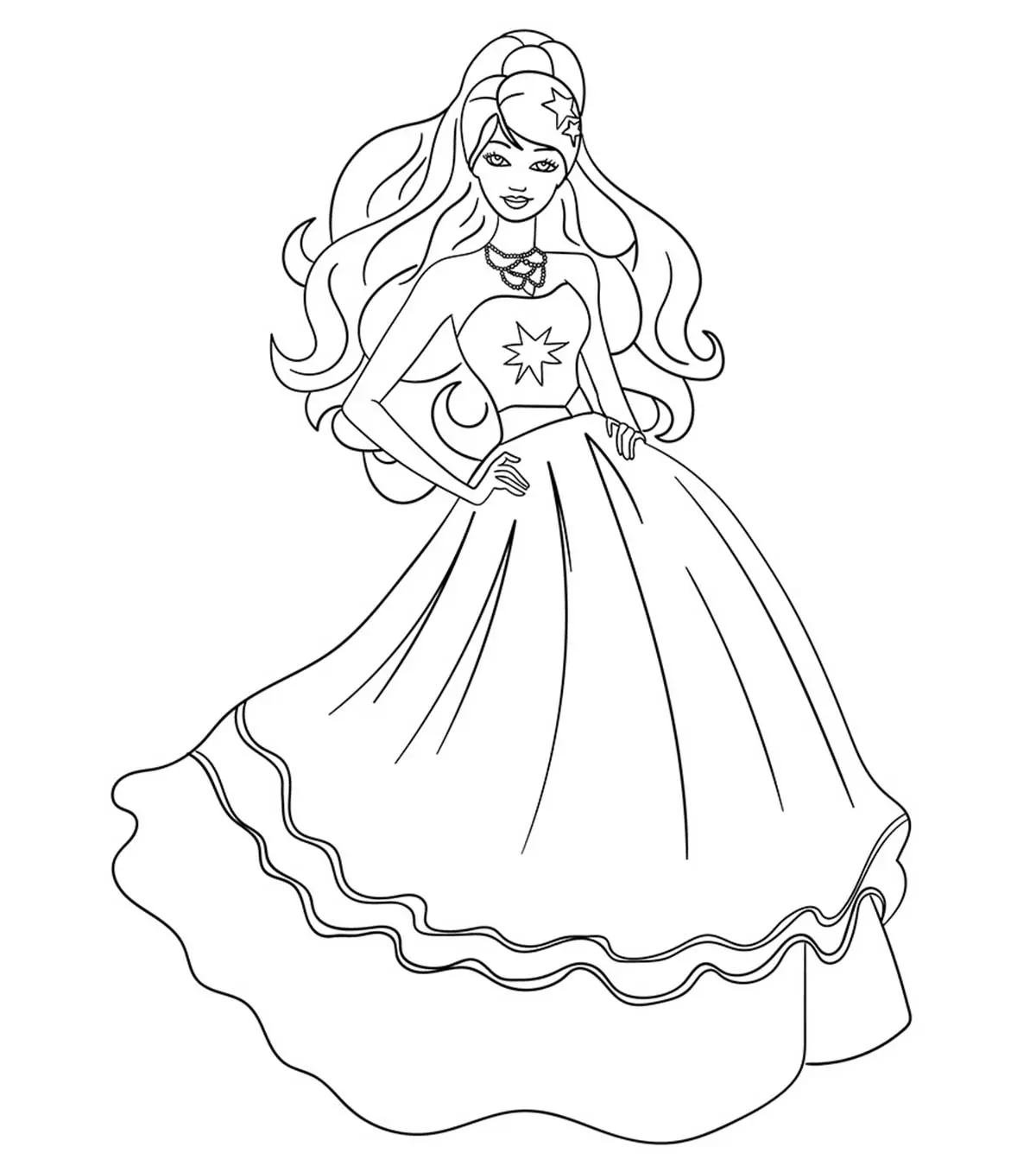
Image: MomJunction Design Team
Children are always on the lookout for ways through which they can express creativity. As a parent, you must ensure that they indulge in productive activities, such as vegetable painting for kids. A fun activity, vegetable painting encourages creativity and helps enhance their fine motor skills. It also allows children to explore textures and colors.
This engaging and educational activity requires minimal materials—just some vegetables from your kitchen or garden, a canvas, brushes, and some non-toxic paint. So, gather these supplies and read this article to know how you can get your child to embrace their artistic abilities.
Key Pointers
- Children can use veggies such as bell peppers for flowers or potatoes for circles. It’s a fun way to learn about shapes while painting.
- Let them explore and create patterns, such as using carrots or celery to create stamps.
- You can cut specific shapes from vegetables to let children paint them.
- Use non-toxic water-based paint for the activity to make it safer.
10 Creative Vegetable Painting For Kids
1. Asparagus Paint Brush
Your kid can make use of an asparagus stalk as a paint brush. Let him paint beautiful lines in different colors on a plain sheet of paper. They may use watercolors, acrylics, oil paints, or any other kind of colors they wish.
The activity will help:
- Teach your kid to be innovative by painting with a vegetable paintbrush.
- Ensure that he paints within the specified lines accurately.
2. Broccoli Stamps
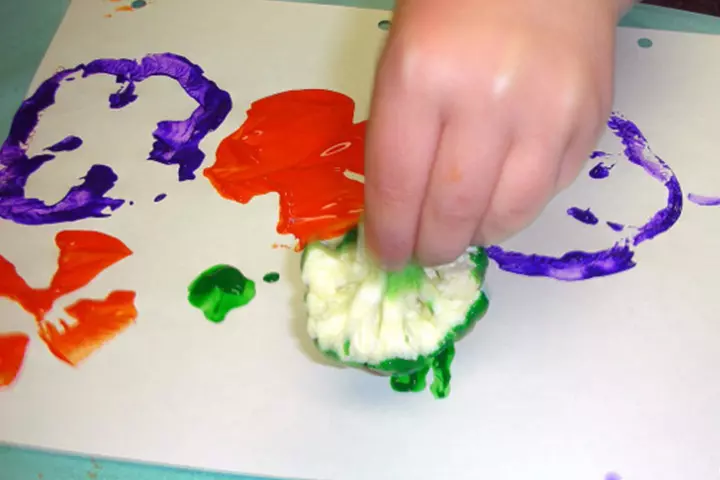
Broccoli florets can be used creatively as a stamp. Let your child dab it in paint and apply on a plain piece of paper.
This activity will help:
- Teach your kid to recognize colors in order to segregate them.
- Ensure that your kid learns the health benefits of eating broccoli.
3. Capsicum Print
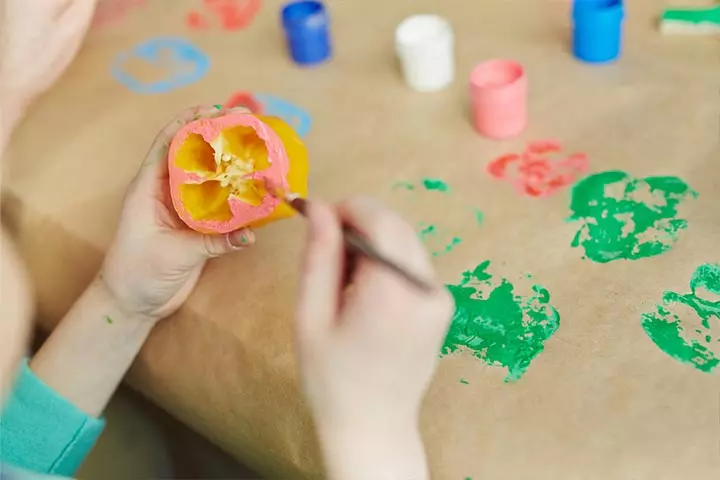
This is one vegetable painting for kids, for which you may need to cut the capsicum into half for your kid. Now let your kid add fabric paint to it and help create a wonderful design on a handkerchief.
This activity will help:
- Teach your kid the art of creating color stamps with cut vegetables.
- Ensure that he learns something new at home to flaunt during art and craft class at school.
4. Ladyfinger Leaves
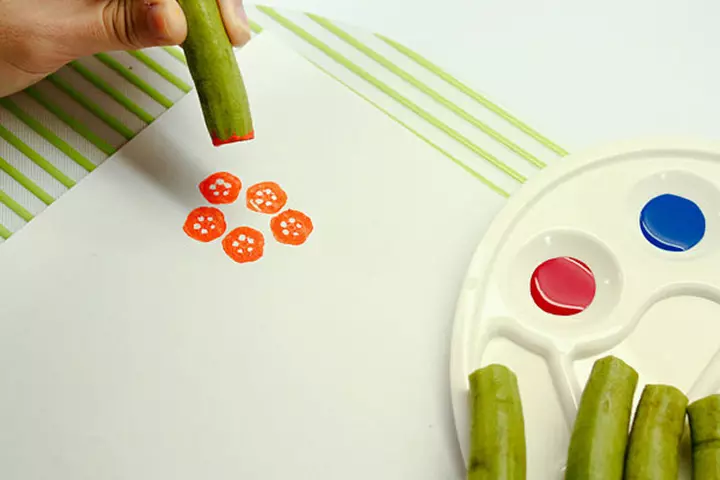
You can cut a lady finger into half and let your child add paint on it. Help him create leaf designs on a piece of paper.
This activity will help:
- Teach your kid to use interesting materials to create beautiful prints.
- Ensure that your kid finds innovative ways to express himself through art and show off in the art class.
5. Carrot Painting
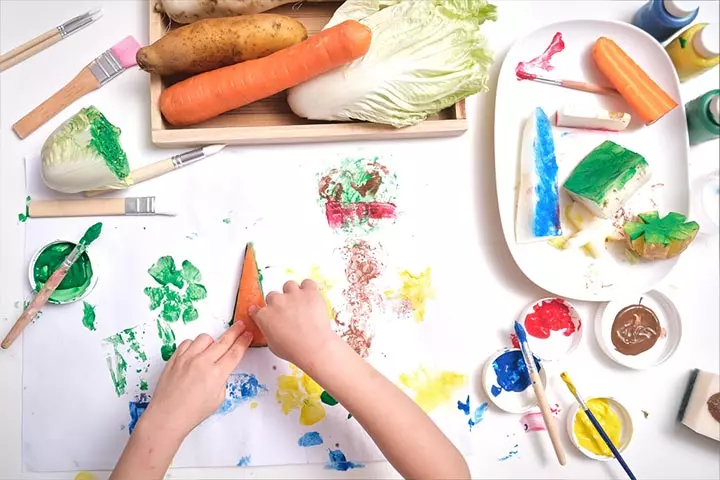
This is one of the interesting design options for painting or vegetable printing for kids. Let your kid have some fun by cutting off the tip of the end of the carrot and using it as a way to create circles.
This activity will help:
- Give your kid an art lesson about new shapes – oval, circle, rectangle, and triangle.
- Ensure that your child learns how to paint within the lines.
 Quick tip
Quick tip6. Corn Prints
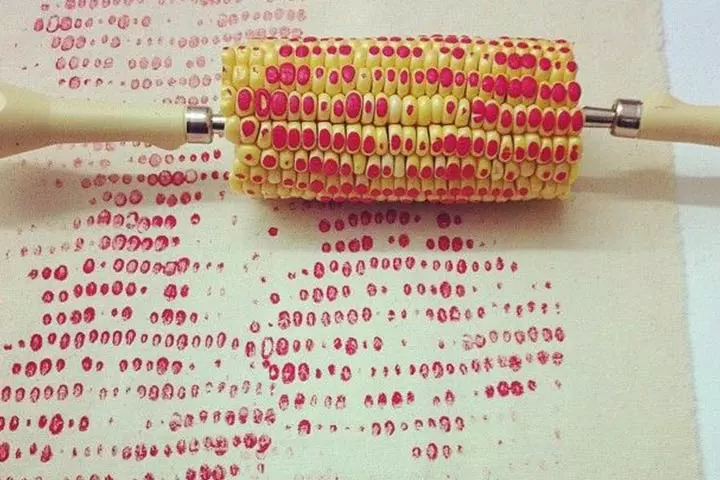
Use the eaten shell of the corn to create beautiful prints. It will be a great pastime for your kid.
This art activity will help:
- Teach your child to be creative in coming up with stunning prints and combining two colors to form a new hue.
- Improve his or her concentration while undertaking this task.
7. Potato Fun
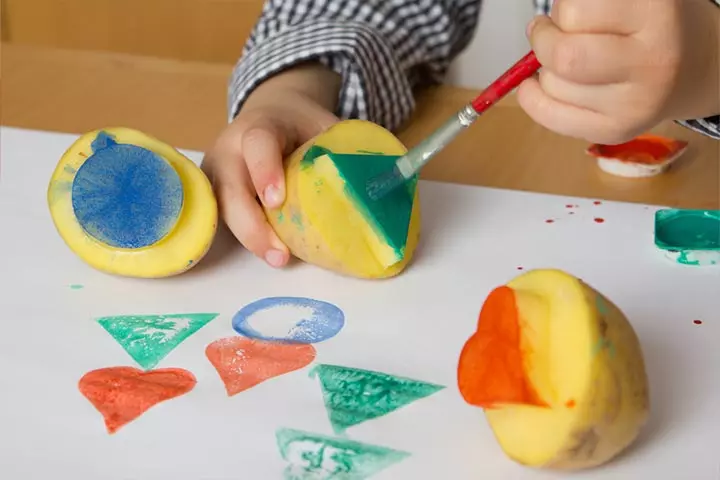
Cut a potato into two halves. Allow your kid to dab each piece in a different color to create fun designs.
This activity will help:
- Teach your kid how to create circles with the potatoes to form interesting flower shapes.
- Ensure that your kid manages to incorporate other vegetable shapes with the potato to create beautiful designs.
8. Celery Rose
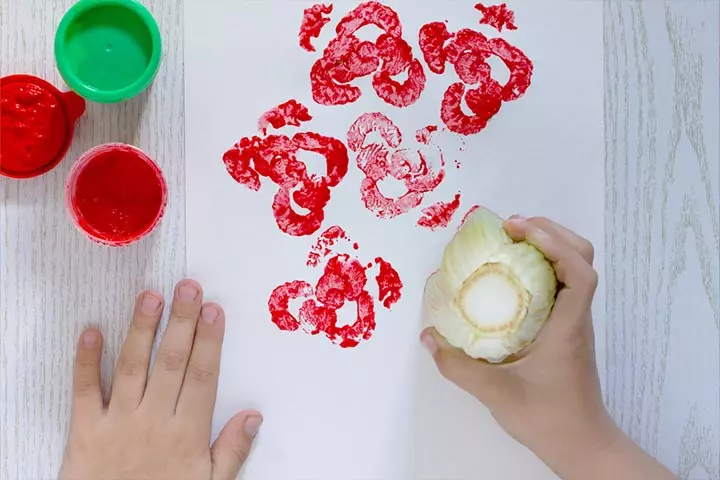
Your kid can use a bunch of celery sticks together to create a beautiful rose design. If you do not have celery at hand, try using bok choy, which makes a similar design. Blogger and mother of three lovely daughters, Sally tried vegetable painting with her daughter, and says, “Our favorite vegetable to print with was the bok choy. I cut the bok choy about 5cm from the end which made a lovely rose-like stamp. The stems of the bok choy made a similar pattern when tied together with a rubber band. My favorite picture that Ava (daughter) made was a rose garden using all three of the vegetables. First she started with bok choy roses, added stems with the carrot then leaves with the celery and finished off with a carrot dot for a bumble bee (i).” Trying this activity will help:
This activity will help:
- Teach your kid to be creative and make beautiful rose designs.
- Ensure that your kid remains productive during his time at home and learns to use the sticks to create a fence design or a textured, knit design.
9. Treviso Radicchio

Cut the head of the Treviso Radiccio and allow your kid to dab it in red print to create rose prints.
This activity will help:
- Teach your kid to match colors efficiently.
- Ensure that your kid uses the leaves individually to create new shapes.
10. Watermelon Hearts
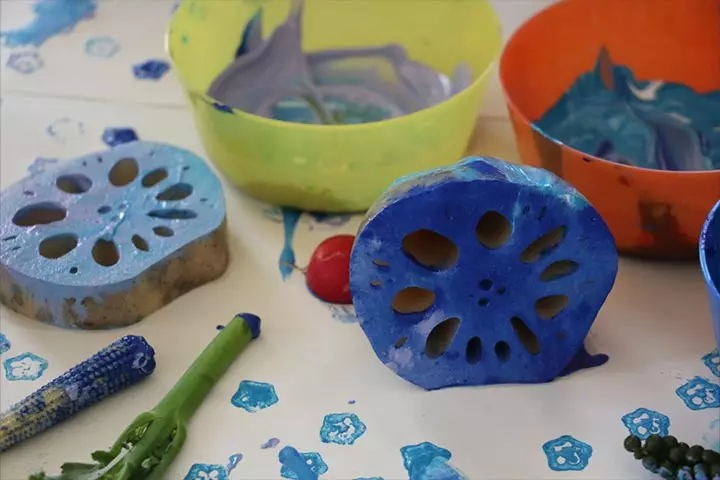
Use a steel heart container to cut out heart shapes from a watermelon. Use this to help create prints by dabbing it in paint.
This activity will help:
- Teach your kid to think creatively – he can also cut oval or rectangular shapes from the watermelon.
- Ensure that he or she learns to embellish with cut out shapes.
Frequently Asked Questions
1. What are the benefits of vegetable paintings for children?
Like other painting activities, vegetable painting can help children strengthen their fine motor skills as they use brushes, scissors, and other equipment. This activity can also improve their visual-spatial recognition, memory, and concentration skills. Additionally, it can boost creativity and self-expression in children by allowing them to choose the color or vegetable of their choice. Moreover, vegetable paintings can be an educational activity for children to learn about various vegetables, their color, texture, patterns, health benefits, and other characteristics (1) (2).
2. How can I make vegetable painting interesting for my child?
Get a variety of vegetables, especially those with unique shapes, such as asparagus or broccoli, to create fun designs. You can also experiment with vibrant colors and textured paints or use varied canvases, such as textured paper or fabric, to create diverse effects.
3. What types of vegetables can be used for vegetable paintings?
While you may allow your children to use any vegetable they like, some vegetables with harder covering and those with patterns, such as celery, carrots, broccoli, cabbage, okra, etc., may give more defined painting stamps. Also, it’s best to use leftover vegetable pieces so as to not waste the vegetables.
4. What kind of paint should be used for vegetable paintings?
Since the activity involves children, offer water-based, non-toxic colors or acrylic paints which are safe for children.
5. Can vegetable paintings be done on different surfaces?
Yes, these art activities for toddlers can be done on plain paper, cardboard, or foam plates, and even on wooden boards and bottle crafts. You can encourage your children to make beautiful home decor using vegetable painting and frame them in your living room, children’s room, or anywhere you like.
6. What are some safety precautions to take when using vegetables for painting?
While this is one of the most safe painting ideas for kids, make sure to supervise your children when they are cutting the vegetables for the activity. It is better to supply younger children with previously cut vegetables. Also, make sure to use non-toxic colors and dispose of all the vegetable wastes once they are done with the activity.
Infographic: Creative Vegetable Stamp Painting For Children
The different shapes and textures of vegetables provide endless possibilities for different crafts and paintings by using them as stamps. Including this activity in the arts and crafts will surely interest your children. So, let’s explore some ideas for vegetable stamp paintings for children in the infographic below.
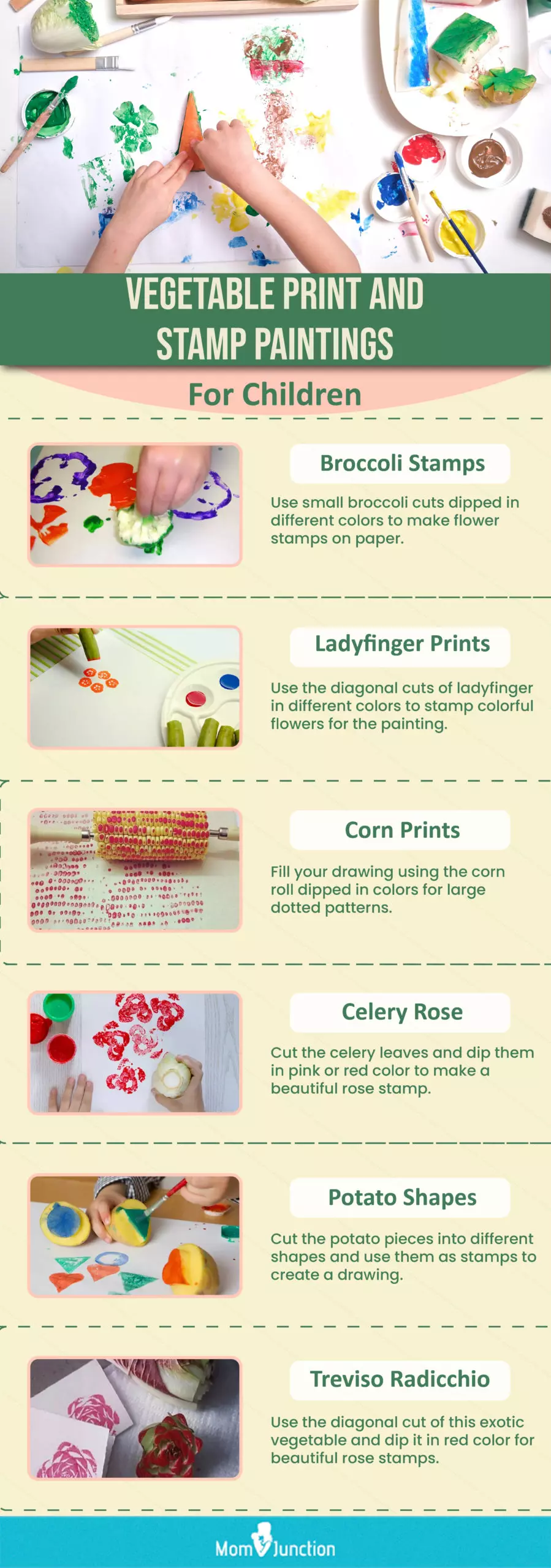
Illustration: Momjunction Design Team
Vegetable paintings for kids are a fun way of expressing their creativity. This may also boost their imagination. Whole or cut surfaces of different vegetables exhibit interesting patterns. When dipped in paint, they can be used to create attractive prints. Learning about vegetables through this activity could also be easier for children. They can understand about harvest, produce, farming, and nature. You can help them create colorful stamp art from potatoes and carrots, pretty prints of lady’s fingers, or make a paintbrush of asparagus. Your children are sure to enjoy this form of art and amaze their peers with vegetable painting ideas in school.
Illustration: Fun And Innovative Vegetable Paintings For Kids
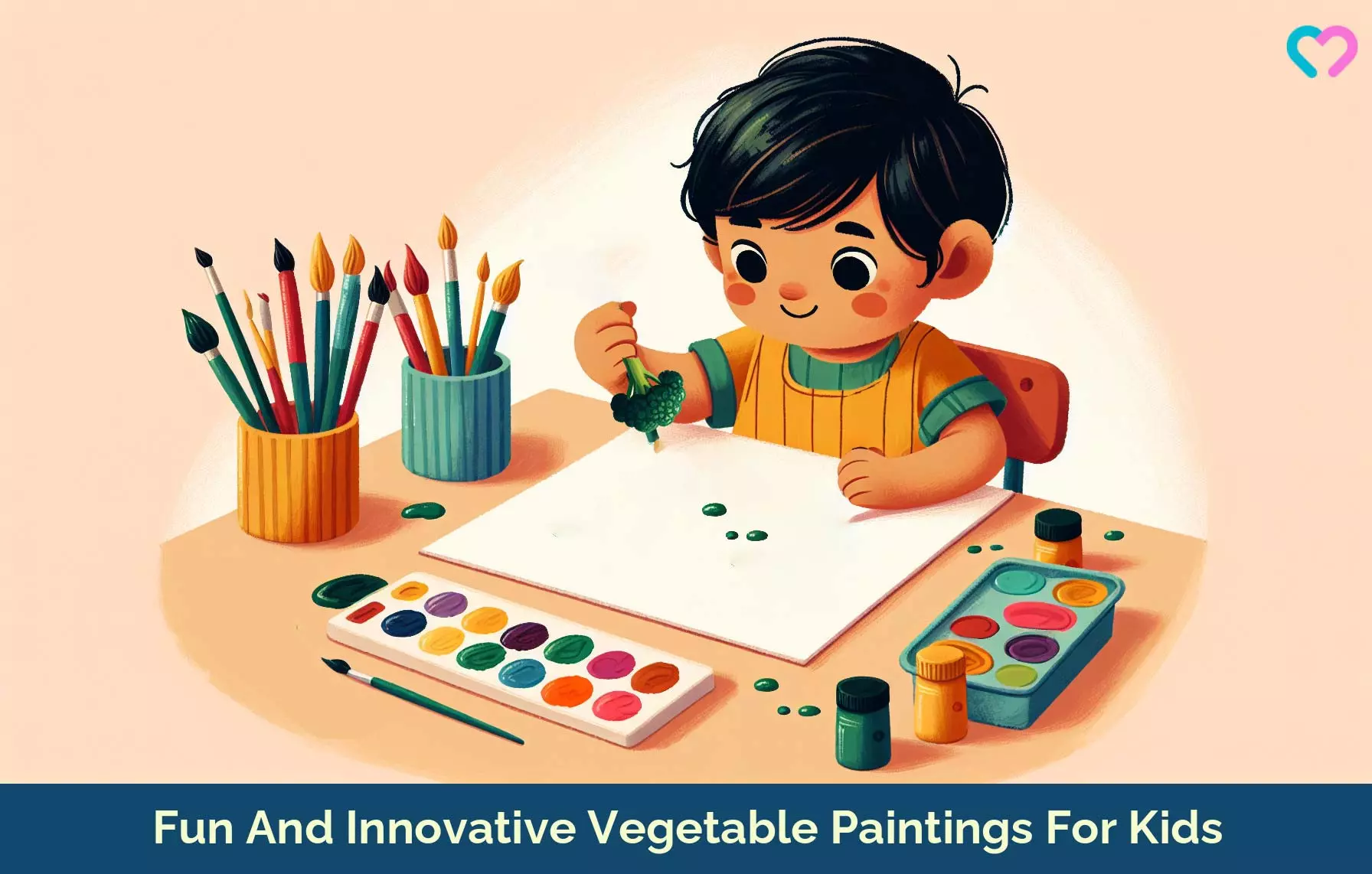
Image: Dalle E/MomJunction Design Team
Encourage your children’s creativity through delightful DIY Potato Stamping! Create charming Tulips, Chicks, Watermelons, and Pineapples with just a few simple steps. Unleash the artistic joy and let their imagination thrive!
Personal Experience: Source
MomJunction articles include first-hand experiences to provide you with better insights through real-life narratives. Here are the sources of personal accounts referenced in this article.
i. Painting with vegetables.https://www.littlehiccups.net/2012/06/painting-with-vegetables.html
References
- The benefits of art making for kids.
https://www.playkettering.org/the-benefits-of-art-making-for-kids/ - Fruit and Veggie Prints.
https://www.chicagobotanic.org/blog/how_to/fruit_and_veggie_prints
Community Experiences
Join the conversation and become a part of our nurturing community! Share your stories, experiences, and insights to connect with fellow parents.
Read full bio of Erin DeCarlo
Read full bio of Harshita Makvana
Read full bio of Deepa Thomas






